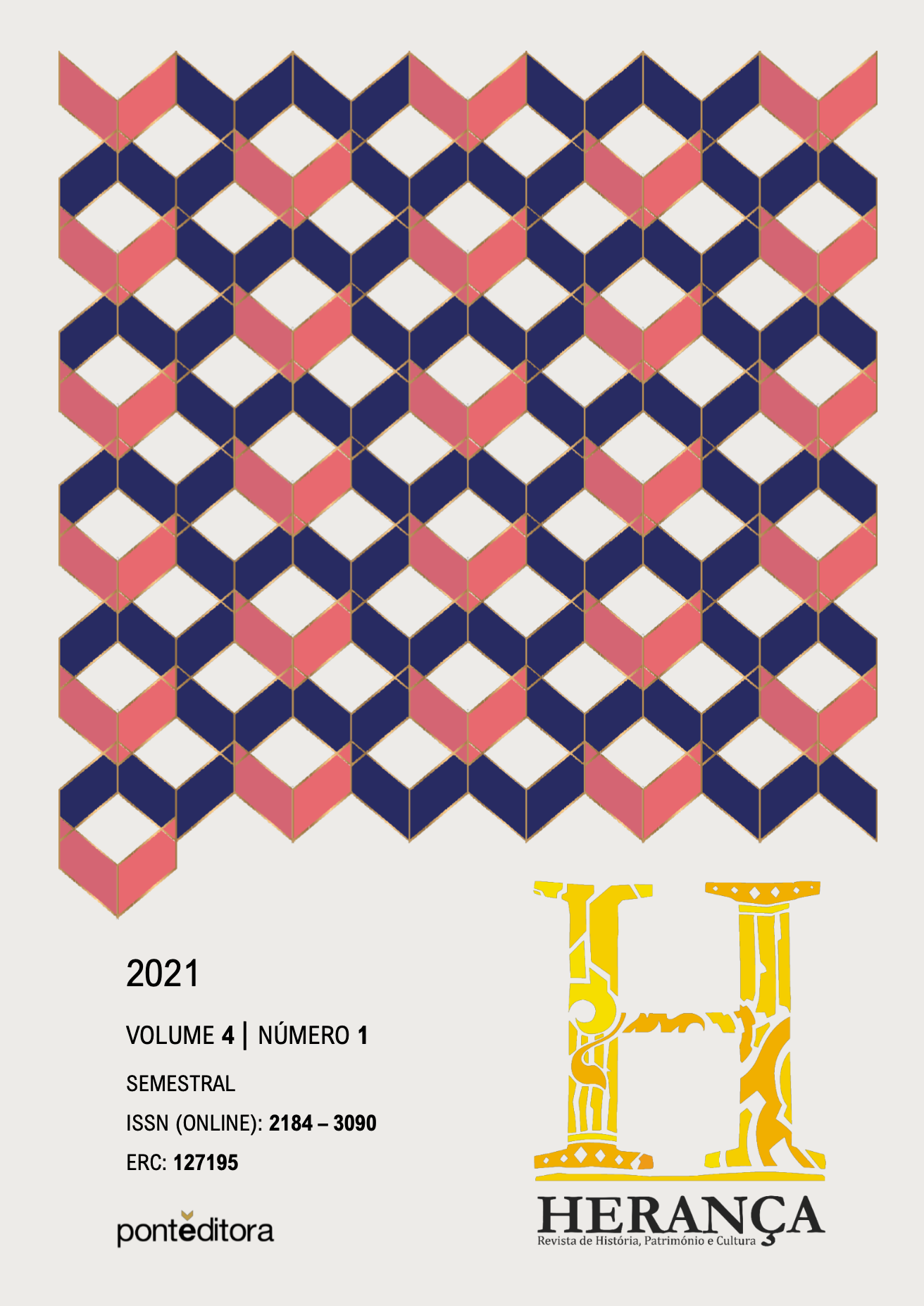Urban Art and Tourism: a contradiscursive proposal on artistic practices in urban public space and the impacts of tourism
DOI:
https://doi.org/10.52152/heranca.v4i1.351Keywords:
Cultural Tourism, Urban Public, Urban public spaces, urban art, Cities Development, Urban StudiesAbstract
The artistic intervention in the urban public space, in the use of a specific discourse on contemporary art and the exercise of curatorial practices, lacks an identification with the "place" - inhabited and experienced space, in which habits are created - and with its surroundings situational and social, as well as the recognition of an identity, historical and social context, underlying the specificity of inherited urban development and on that which is projected for the future, post-intervention. Not being consensual, all the different possible perspectives on the consideration of hypotheses for an objectification of artistic intervention, in a utilitarian sense of that intervention, it is extremely important that they are the most appropriate and in accordance with an appropriate historical and cultural reference. the specificity of each "place" occupied, tourism territory. It becomes essential to contextualize each intervention, considered artistic, with other discursive practices on public space, at the international level, which are more successful, verifying the impacts, if they exist in tourism and related areas. It is intended to analyze, not only a "pure" aspect of artistic intervention, in its conceptual framework and bibliographic review of the best practices in terms of Art, but also to analyze the different impacts that it has on cultural tourism in cities and on development social and human in the society in which it operates. It was concluded that art in the urban public space is closely linked to a political discourse that seeks to modernize cities, in order to constitute them as a global brand and pole of tourist attraction. For this, art in the urban public space, has been interpreted not for its discursive capacity, but for its aesthetic delight, therefore not responding to the real needs of urban rehabilitation, either in the architectural or in the social domain. We conclude that, by hypothesis, art when trying to respond to the permits of Tourism, self-determines by subverting the logic of its conception and instead of potentiating social inclusion, it can become a factor of exclusion.
Downloads
References
Augé, M. (1992). Non-lieux - Introduction à une anthropologie de la
surmodernité. Paris: Éditíons du Seuil.
Baudrillard, J. (2002). Crítica de la economía política del signo. Buenos Aires:
Siglo XXI.
Cadela, I. (2007). Sombras de ciudad. Arte y transformacíon urbana en Nueva
York, 1970-1990. Madrid: Alianza.
Campos, R. (2010). Porque pintamos a cidade? Uma abordagem etnográfica
do graffiti urbano. Lisboa: Fim de século.
Cruz, F. (2012). A estetização e a espetacularização da cidade pós-moderna.
VIII ENECULT - Encontro de Estudos Multidisciplinares em Cultura.
Salvador da Bahia: IHAC - FACOM UFBA.
Débord, G. (1997). A sociedade do espetáculo. Rio de Janeiro: Contraponto.
Eugénio, S. (2013). Arte urbana no século XXI – A relação com o mercado da
arte. Lisboa: ISCTE - IUL.
Goes, D. (Março de 2020). Nós somos os outros. (E. Aguiar, Ed.) Revista Saber
Madeira, nº274.
Jasmi, M. F., & Mohamad, N. H. (2016). Roles of Public Art in Malaysian Urban
Landscape towards Imoproving Quality of Life: Between aesthetic and
funcional value. (E. Ltd., Ed.) Procedia Social and Behavioral Sciences,
, 872-880. Obtido de https://doi.org/10.1016/j.sbspro.2016.05.201
Lossau, J. (Julho de 2009). Arte no espaço público: Sobre as relações entre
as perspetivas artísticas e as expetativas das políticas de
desenvolvimento urbano. GeoTextos, 5 - nº1, 37-57. doi:10.9771/1984-
Matoso, R. (2014). Arte pública, espaço e poder. Em U. L. Tecnologias (Ed.),
Livro de Actas do Seminário de Arte Pública e Educação: memória,
intervenção e cidadania - do projecto Arte Pública nas Relações
Culturais Lusobrasileiras - CICANT-ECATI. Lisboa: Universidade
Lusófona de Humanidades e Tecnologias.
Mitrache, G. (2012). Architecture, Art, Public Space. (E. Ltd., Ed.) Procedia -
Social and Behavioral Sciences., 51, 562-566. Obtido de
https://doi.org/10.1016/j.sbspro.2012.08.206
Mohd Fabian, H. (2010). Towards integrating public art in Malaysian urban
landscape. Pertanika J. Soc. Sci. & Hum. Page: 251 – 264.
Muxi, Z. (2004) La arquitectura de la ciudad global. Barcelona: Editorial
Gustavo Gili
Ozsoy, A., & Bayram, B. (2007). The role of public art for improving the quality
of public places in the residential environment. ENHR International
Conference: Sustainable Urban Areas. Rotterdam, The Netherlands.
Pinilla, E. R. (2012). Arte urbano contradiscursivo: crítica urbana y praxis
artística. Em U. N. Colômbia (Ed.), Bitacora 20. Bogotá: Universidade
Nacional de Colômbia.
Pinto, J. R. (2009). O espaço público e o turismo - Identidade e cenário em
duas praças da cidade do Porto. (ISCET, Ed.) Revista Científica do ISCET
- Percursos e Ideias, Nº 1 - 2ª Série.
Thörn, C. (Dezembro de 2011). Spotcity: a arte e a política do espaço público.
(C. -C. Lisboa, Ed.) Forum Sociológico, 21, 43-53







8.png)





